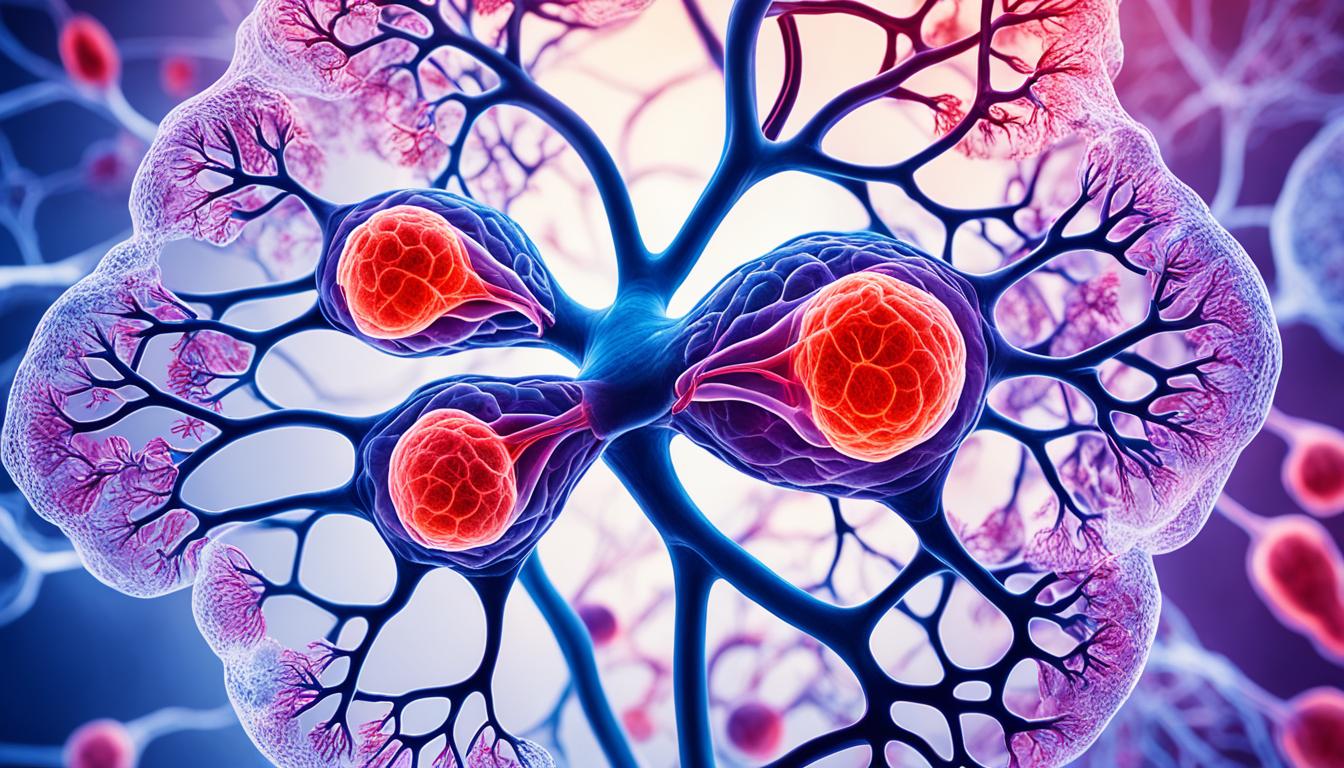Partial anomalous pulmonary venous connection (PAPVC) is a heart defect with a unique name. It means one or more pulmonary veins have abnormal drainage. so They don’t connect to the left heart’s atrium like they should. Because of this, they can drain into the wrong place.
The exact cause of PAPVC isn’t fully understood. But many experts think it happens during heart development before birth. This makes it a type of heart problem that needs to be treated.
Doctors use tests like echocardiography to spot PAPVC. These tests show the heart’s inside, finding where the abnormal connections are.
Treating PAPVC usually means fixing the veins to allow normal blood flow. This is often done through surgery. In less severe cases, doctors might choose a less invasive method. This could include using a balloon or stent to open up the veins.
Recently, stem cell therapy has shown promise for treating PAPVC. Research suggests that stem cells can help repair the heart. They might be able to grow into different heart cells, offering hope for a new treatment.
Key Takeaways:
- Partial anomalous pulmonary venous connection (PAPVC) is a heart issue where veins don’t connect right.
- It can lead to problems like shortness of breath and frequent infections.
- Tests like echocardiography help diagnose PAPVC.
- Treatments can include surgery, less invasive procedures, and maybe one day, stem cell therapy.
- Stem cell therapy shows potential for fixing heart tissue in PAPVC patients.
Types and Variations of Partial Anomalous Pulmonary Venous Connection
Partial anomalous pulmonary venous connection (PAPVC) comes in several types. It depends on where and how the veins drain abnormally. The common types are right-sided and left-sided PAPVC.
Right-sided PAPVC occurs when some pulmonary veins drain into the superior vena cava or the right atrium. On the other hand, left-sided PAPVC has veins draining into the coronary sinus or other veins leading to the right atrium.
Another type is the total anomalous pulmonary venous connection, where all pulmonary veins incorrectly drain into the right atrium. This is the most severe type of PAPVC.
Each PAPVC type has different variants based on the affected veins and where drainage occurs. These differences affect how severe symptoms are and what treatments might be needed.
Types and Variations of PAPVC:
- Right-sided PAPVC
- Superior vena cava drainage
- Direct right atrium drainage
- Left-sided PAPVC
- Coronary sinus drainage
- Drainage into other veins that connect to the right atrium
- Total anomalous pulmonary venous connection
Knowing the specific type and variant of PAPVC is essential for choosing the best treatment for each patient.
Diagnosis and Treatment of Partial Anomalous Pulmonary Venous Connection
Diagnosing PAPVC includes a full look with clinical checks, imaging, and a cardiac catheterization. Doctors often start with an echocardiogram to check the heart’s health. This helps see if there’s an unusual way blood flows through the lungs. A cardiac catheterization gives more details on this condition.
Solving PAPVC varies with its type and how the patient feels. Surgery is needed in most cases. It changes the path of the veins, which helps the blood flow correctly. There are different ways to do the surgery, like making a new path for the blood or connecting wrongly placed veins to the right spot.
In some situations, doctors might choose a procedure without surgery. They might use a balloon or a stent to fix the vein. This is for cases where the vein can safely be treated this way.
There is also hope in using stem cells to treat PAPVC. Early tests show promise. Stem cells might help make the heart healthier by fixing or growing new heart tissue. But, more study is crucial to see if this works safely and well for people.
Summary of Diagnosing and Treating PAPVC
In short, diagnosing PAPVC needs varied tests, including an echocardiogram and a heart catheterization. Surgery is usually the best way to treat it. Catheter-based procedures are an option in some cases too. Stem cell treatment is also a hopeful area, but it needs more research to be sure it’s safe and effective.
| Treatment Options | Advantages | Considerations |
|---|---|---|
| Surgical Repair | – Provides long-term resolution – Improves symptoms and prevents complications |
– Invasive procedure – Requires skilled surgical expertise |
| Catheter-Based Interventions | – Minimally invasive – Suitable for specific anatomical characteristics |
– Not applicable to all cases – Limited long-term data |
| Stem Cell Therapy | – Potential for tissue repair and regeneration – Non-invasive approach |
– Experimental stage – Safety and efficacy require further investigation |
Conclusion
Partial anomalous pulmonary venous connection (PAPVC) is a rare heart issue. It can cause different problems. Doctors use special tests to find the issue’s scope and location. Treatment for PAPVC includes surgery, less invasive procedures, and new treatments like stem cell therapy.
New methods in surgery and less invasive procedures help a lot. They fix the heart’s veins, making blood flow better and lives easier. Stem cells might also help fix heart damage in PAPVC. But, it’s not fully proven yet and needs more study.
The future of PAPVC care looks bright as we learn more. New treatments and research, like using stem cells, show hope for better ways to manage this condition. This offers a promising outlook for the future.
To sum up, PAPVC is a tough heart issue. Yet, with new surgeries and treatments like stem cells, things are looking up. Staying updated with new treatments and research could mean better life for those with PAPVC.

